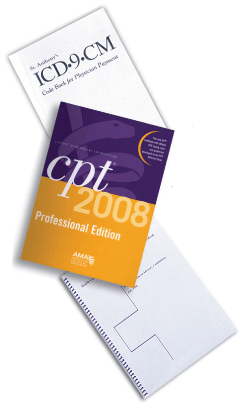 Q: Are all ophthalmic diagnostic tests reimbursed separately from an eye exam?
Q: Are all ophthalmic diagnostic tests reimbursed separately from an eye exam?
A: No. Incidental tests are defined as parts of an eye exam or consultation and are not separately charged. Examples of incidental tests include: Amsler grid; brightness acuity test (BAT) or glare test and color vision screening with pseudoisochromatic (Ishihara) plates.
CPT contains a section, "special ophthalmological services," that describes diagnostic tests that go beyond eye exams which "… may be reported in addition to the general ophthalmological services or evaluation and management services." These tests are billed separately and require specific indications and chart documentation.
Q: Must a physician be present in the clinic when diagnostic tests are performed?
A: It depends. Medicare has established three different levels of physician supervision of technicians, commensurate with the risk to the patient and/or the skills needed to obtain useful results. Tests requiring general supervision do not necessitate physician presence when the test is performed. Tests requiring direct supervision obligate physician presence in the office suite. Tests requiring personal supervision require a physician to be in attendance in the room during the performance of the test. Most ophthalmic diagnostic tests require general supervision.
Q: Are there any ophthalmic tests that must be performed by the physician?
A: Gonioscopy and extended ophthalmoscopy are examples of tests that must be performed by a physician. The Medicare fee schedule doesn't separate these tests into a technical and professional component as it does for other tests that a technician may perform.
Q: Does Medicare require a written order for diagnostic tests?
A: Yes. All diagnostic tests not personally performed by the physician require the physician's order. It is usually noted as part of the plan in the medical record. It may be a notation as simple as "VF today," "FA – OD next visit," or as complex as ordering extensive blood chemistry tests at the hospital.
Q: Are there any limitations as to who may order a diagnostic test?
A: Yes. Medicare and other payers expect that the physician ordering the test will use the test (42 CFR §410.32) and has the capability to do so. The regulation states "Tests not ordered by the physician who is treating the beneficiary are not reasonable and necessary." The physician who is treating the beneficiary is directly managing the disease, and treating the disease is within his or her scope of practice.
Q: Does Medicare cover tests provided on the basis of standing orders?
A: No. Standing orders may improve office efficiency, but they usually create problems with reimbursement. Within Medicare's regulations, there are numerous statements precluding reimbursement for so-called PRN or standing orders because they are routine screenings and non-covered services. To avoid this, physicians should examine the patient first and then determine which tests (if any) are necessary.
Q: What is meant by the phrase "with interpretation and report" found in the description of most ophthalmic diagnostic tests?
A: It means that the physician must look at the results of the test, make an interpretation, and place a notation in the patient's medical record within a short time of the test results being available. At a minimum, interpretation of a diagnostic test includes: the date of the test; the reliability of the test; the test findings; a diagnosis (if possible); the impact on treatment and prognosis, if any; and the signature of the physician.
An interpretation can be written on a separate page in the medical record, as a discrete entry together with other evaluation and management services, or in the blank space on the printout of the test results (e.g., visual fields). If the notation is placed on an exam form, it is important that it be identified as the test interpretation and not part of the exam.
Q: Are all ophthalmic diagnostic tests considered bilateral and paid once for both eyes?
A: No. Some special ophthalmological services are defined as "unilateral" in CPT, or Medicare categorizes them as such. They are:
• 92070 Fitting of therapeutic contact lens;
• 92135 Scanning computerized ophthalmic diagnostic imaging;
• 92225 Extended ophthalmoscopy, initial;
• 92226 Extended ophthalmoscopy, subsequent;
• 92230 Fluorescein angioscopy;
• 92235 Fluorescein angiography; and
• 92240 ICG angiography.
When these tests are performed on both eyes at the same time, Medicare reimbursement is 200 percent of the allowable instead of the customary 150 percent for surgical procedures. All other ophthalmic diagnostic tests are considered bilateral services.
Q: How frequently may diagnostic tests be performed?
A: In general, all diagnostic tests are reimbursed when medically indicated. Clear documentation of the reason for testing is always required. Some Medicare Administrative Contractors (MACs) publish utilization guidelines or limitations on payment in their local coverage determinations. Unfortunately, these vary by contractor. Some MACs do not publish LCDs for specific diagnostic tests. Others publish indications and limitations, which might or might not agree with other MACs. Check your local contractor for published LCDs.
Q: If a test is performed to rule out a particular disease and no disease is found, may we use the suspected disease as the diagnosis for claim submission?
A: No. In September 2001, CMS issued a clarification on the use of ICD-9 diagnosis codes with diagnostic tests (PM B-01-61). This clarification specifies that a confirmed diagnosis should be coded on the claim whenever possible. The diagnosis code chosen should be to the highest level of specificity. When a definitive diagnosis is not made, signs and symptoms may be used on the claim. Under no circumstances may you file a claim with incorrect information (i.e., an incorrect diagnosis code) to facilitate reimbursement.
Q: If the payer does not include a sign or symptom code as an acceptable diagnosis, may the test be billed to the patient as a non-covered service?
A: Yes. Prior to testing, explain to the patient why the test is necessary and that Medicare or other payer will likely deny the claim. Ask the patient to assume financial responsibility for the charge; get his signature on Medicare's Advance Beneficiary Notice of Non-coverage (ABN) or a waiver form (for other payers) prior to testing and submit your Medicare claim with modifier -GA. You may collect your fee from the patient at the time of service or wait for a denial. If both the patient and insurance pay, promptly refund the patient or show why the claim was paid in error.
Q: Which ophthalmic test has seen the greatest increase in utilization in recent years?
A: The BESS data published by CMS for 2006 reveals that scanning computerized ophthalmic diagnostic imaging (SCODI), 92135, grew 28 percent from 2005 to 2006 when more than 4 million tests were performed by ophthalmologists. To put this in perspective, for every 100 eye exams filed by ophthalmologists in 2006, 20 percent of all office visits also contained a line item for 92135. 
Ms. McCune is vice president of Corcoran Consulting Group. Contact her at DMcCune@corcoran ccg.com.



